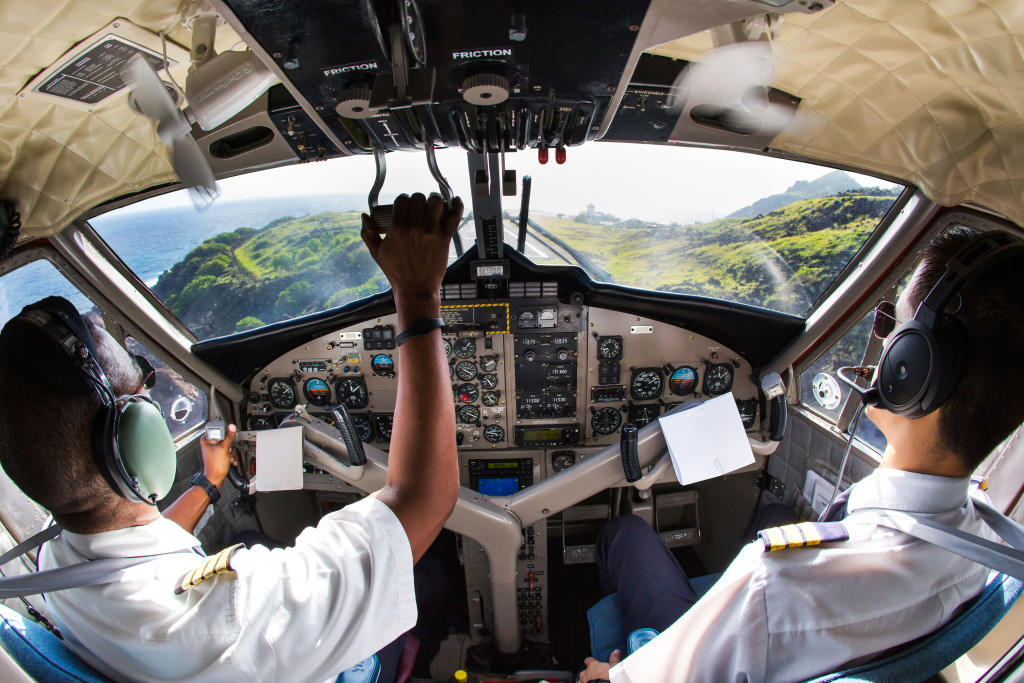• Robotics are used in aircraft manufacturing to build planes faster and more efficiently.
• 3D printing has enabled designers to explore new ideas for aircraft design quickly and affordably.
• The utilization of data analytics allows airlines to make decisions based on customer feedback.
• Having robust cybersecurity systems is essential in protecting aircraft systems from malicious attackers.
• Aircraft light bulbs, de-icing fluids, radios, and advanced navigation systems are other technologies making flying easier.
The aviation industry has seen a massive surge in innovation over the past decade. From new designs to materials, 3D printing, and robotics, the possibilities of what can be done with flight have grown exponentially. But what does this actually mean for the industry? Read on to find out about things you should know about how innovative technologies are changing the aviation industry.
Robotics
Robotics is quickly becoming one of the most essential tools in modern aircraft manufacturing. Robots can perform many tasks previously done by hand, such as assembling parts, welding components, and even painting aircraft exteriors. This means that aircraft can be built faster and more efficiently.
Automation
Automation has also had a significant impact on the aviation industry. Autopilot systems allow pilots to fly planes without having to manually control them at all times, making flying much safer and more efficient than ever before. Automation also allows for other features, such as automated maintenance and pre-flight checks, making it easier for airlines to keep their planes in tip-top condition at all times.
3D Printing
3D printing is revolutionizing aircraft design by allowing manufacturers to quickly create prototypes and test out new ideas without building full-scale models from scratch every time. This means that designers have greater freedom when creating new designs for aircraft, allowing them to explore ideas that would otherwise have been impossible or too expensive to make using traditional methods.
Data Analytics

Big data analytics is becoming increasingly important in the aviation industry as more companies start using data collected from flights and passengers to inform decisions regarding routes, pricing, maintenance schedules, and more. This data helps airlines make better decisions based on real-time feedback from customers, which can lead to improved customer experience and higher profits overall.
Cybersecurity
With so much technology being used in modern aircraft, cybersecurity has become a critical issue for airlines around the world. Airlines need to ensure that their systems are secure against malicious actors who could potentially cause severe disruption or even disaster if they gain access to sensitive information or control systems within an aircraft’s systems architecture. This is something that is becoming increasingly important in today’s connected world, where hackers pose a real threat.
Other Technologies
Besides the innovations discussed above, there are other technologies that are more simple but no less impressive. These technologies have already been in use for some time and have helped to make flying easier and more efficient for both pilots and passengers. Here are a few examples:
Aircraft light bulbs
Aircraft light bulbs play an essential role in the aircraft’s functioning, providing clear visibility to the pilots both inside and outside of the cockpit. These specialized lights must be designed and manufactured with precision and must adhere to strict safety standards. Aircraft light bulbs are incredibly efficient and must be designed in such a way that they are able to tolerate high temperatures in a low-pressure environment.
Aircraft de-icing
De-icing is a common problem in cold climates, and aircraft need to be prepared to fly safely in these conditions. Aircraft de-icing systems use fluids that are applied either manually or automatically, depending on the type of aircraft. The fluids help remove ice build-up from the wings and other parts, which can affect the aircraft’s performance.
Aircraft radios
Aircraft radios have been in use for some time, and they are still an essential part of communication between pilots and air traffic controllers. Aircraft radios are designed specifically to meet the needs of high-altitude communication and must be able to withstand extreme temperatures and pressures.
Advanced navigation systems

Modern navigation systems are a must for today’s pilots, allowing them to accurately and safely navigate their aircraft in all kinds of conditions. Advanced navigation systems use GPS and other technologies to provide accurate information about a plane’s position and make it easier for pilots to follow the correct route.
From 3D printing and robotics to aircraft light bulbs and advanced navigation systems – these technologies have made it easier for pilots to fly safely while also providing customers with an improved customer experience.
Automation and data analytics allow airlines to make better decisions based on real-time feedback, making flying more efficient. As technology continues to evolve, so will the possibilities of what can be done with flight – only time will tell what new innovations await!
